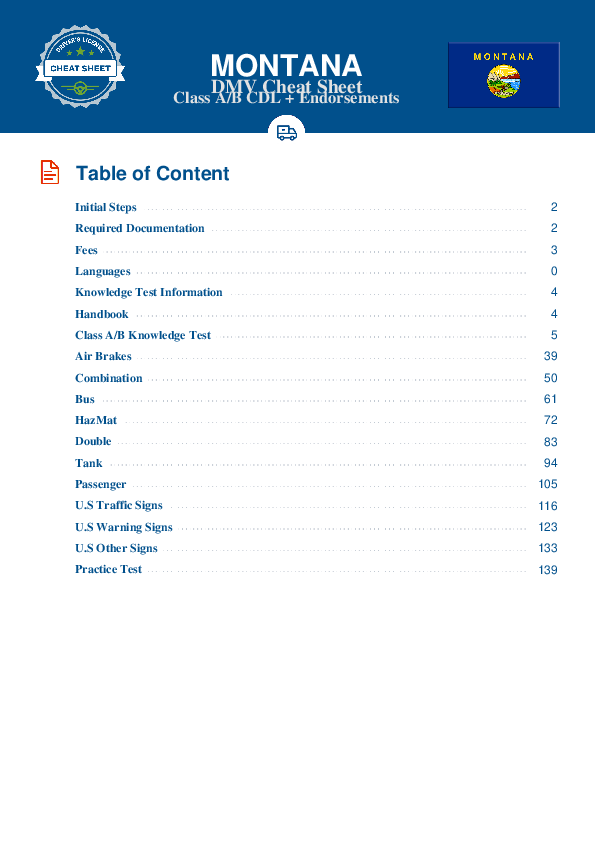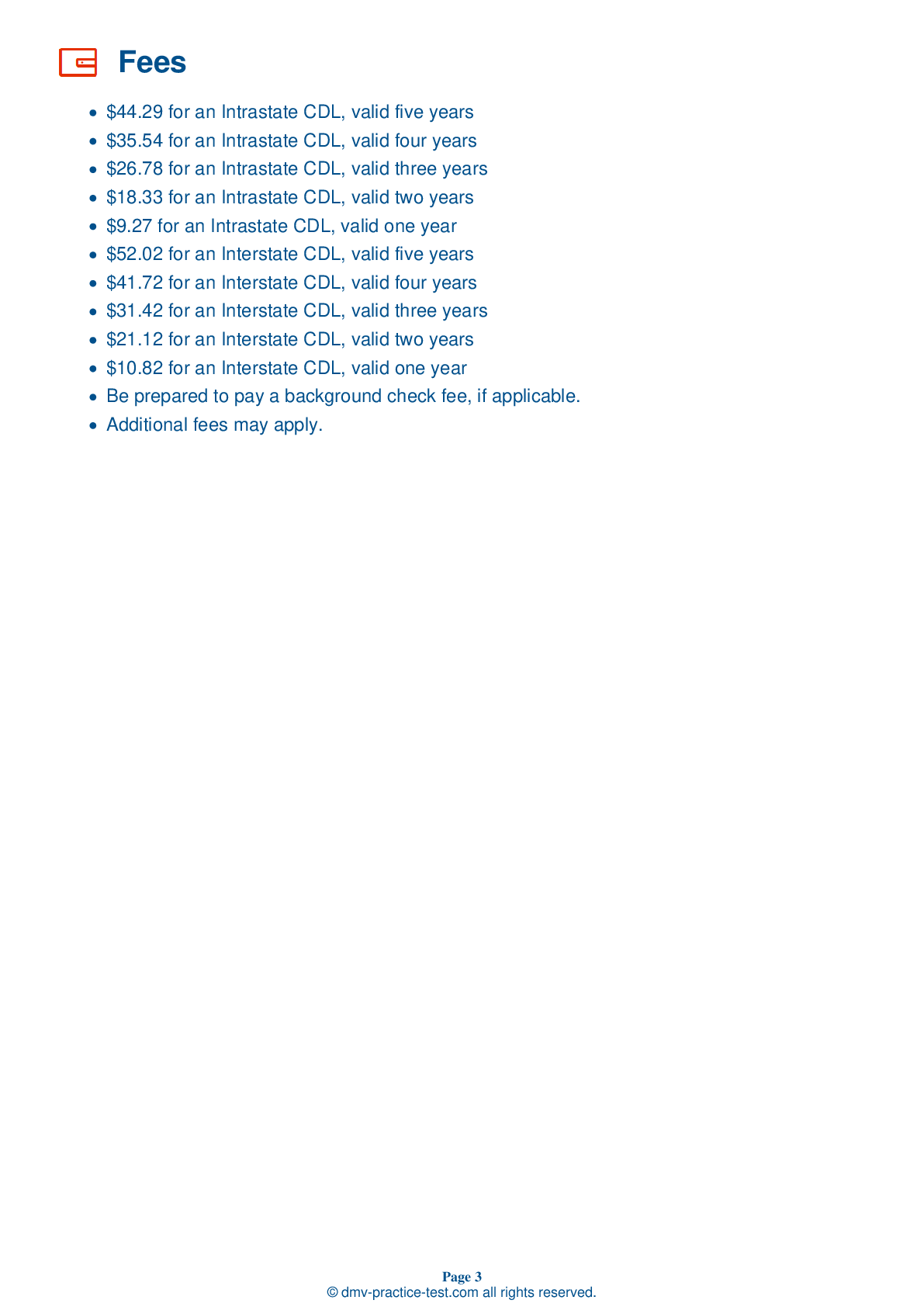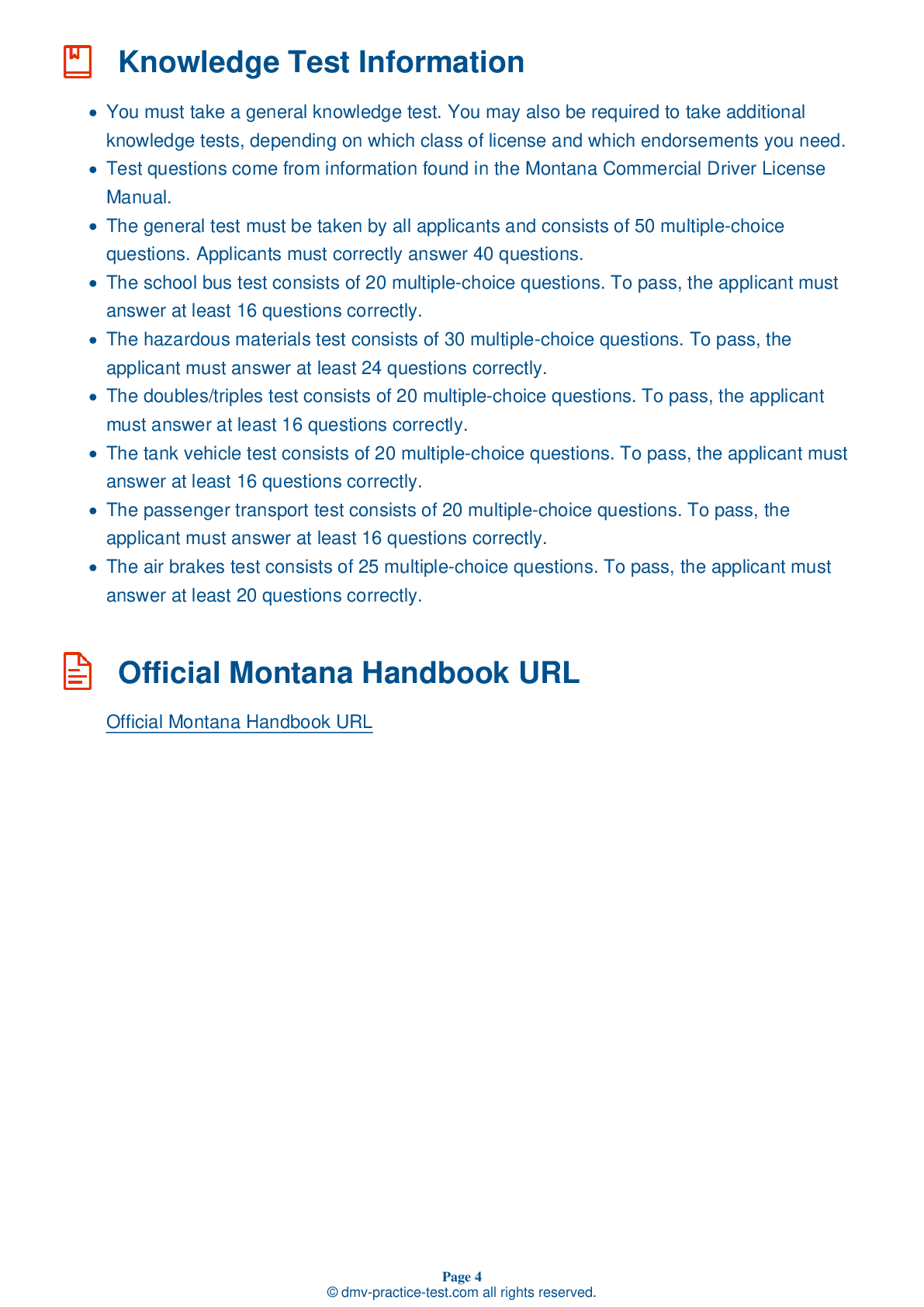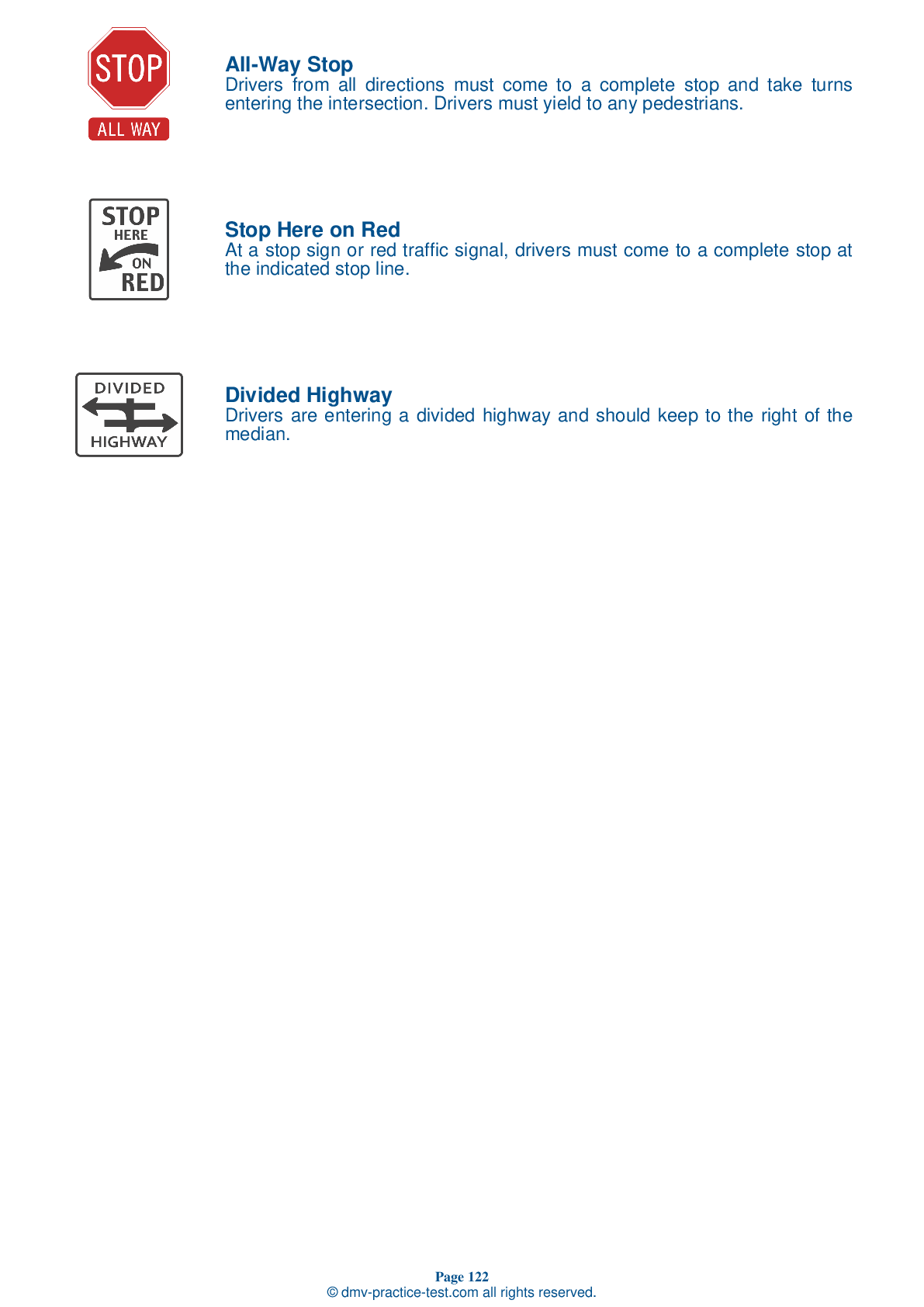Combination #1
Combination Vehicles Practice Test | Montana 2025 #1
Train for FREE online with our Montana CDL combination vehicle test. The official exam test consists of several obligatory parts, with all of them checking your knowledge of different blocks of road rules. If you need to obtain a MT combination license in 2025, practice as much as possible. Free sample tests published on our website will help you check and improve your knowledge and boost your grades. Please bear in mind that DMV requirements for issuing a combination license may vary from state to state.
20
16
20
1 . During a trip, the ____ should be open.
When starting a trip, be sure that all shut-off valves are in the open position, except for the last valves on the rear trailer. It is important that air reaches the brakes on all trailers and that it is not able to escape from the back of the vehicle.
2 . Before beginning a trip, you should:
Before a trip, you should ensure that air reaches all air brakes on all trailers by opening up the rear emergency line and service line shut-off valves and listening for escaping air. Close both shut-off valves before beginning to drive.
3 . Push in the trailer air supply control to:
Supply the trailer with air.
Push in the trailer air supply control to supply the trailer with air. Pull out the trailer air supply control to turn off the air supply and activate the emergency brakes.
4 . Trailers with low underneath clearance can present challenges when driving over:
Railroad-highway crossings may be difficult to cross when pulling a trailer with a low underneath clearance. In particular, both low-slung units and single-axle tractors pulling long trailers are especially challenging to drive over raised crossings.
5 . Combination vehicles need extra space on the road because they:
Combination vehicles need more space on the road than other commercial vehicles because they are longer and need more space to turn and stop. It is especially important to properly manage space when you are operating a combination vehicle.
6 . To find out if a vehicle that was built before 1998 has an Anti-Lock Braking System (ABS), you can:
If you are operating a vehicle built before 1998 and are unsure if the trailer has an Anti-Lock Braking System (ABS), you can check under the trailer for wheel speed sensors coming from the back of the brakes.
7 . Older trailers are not equipped with spring brakes. This means that if the air supply for a vehicle's air braking system leaks away:
Older trailers do not have spring brakes. This means that if the air supply in an older trailer's air tank has leaked away, there will be no working brakes connected to the trailer and its wheels will turn freely.
2025 Montana | Frequently Asked Questions
A CDL Class B license in Montana allows the holder to operate commercial vehicles weighing more than 26,000 pounds and towing vehicles not exceeding 10,000 pounds. This includes buses, dump trucks, delivery trucks, and utility vehicles. The driver must pass a general knowledge test and a skills test in the type of vehicle they will be driving.
A Class B CDL license in Montana allows the holder to operate single vehicles with a gross vehicle weight rating (GVWR) of 26,001 pounds or more, or a towed vehicle not exceeding 10,000 pounds GVWR. This includes large passenger buses, segmented buses, delivery trucks, dump trucks with small trailers, and trucks that carry hazardous materials.
To acquire a Class B CDL license in Montana, you must be at least 18 years old (21 if you want to drive across state lines), possess a valid Montana driver’s license, and pass a vision test. You'll also need to pass a written knowledge test, obtain a commercial learner's permit (CLP), and pass a skills test in the type of vehicle you'll be driving.
To qualify for a Class B CDL license in Montana, you must be at least 18 years old. However, if you intend to drive a commercial vehicle across state lines or carry hazardous materials, you must be at least 21 years old. You must also meet all other licensing requirements.
Specific endorsements aren't necessary for a Class B CDL license in Montana, but they can expand your job opportunities. Endorsements certify you to drive certain types of vehicles or carry specific cargo, like hazardous materials. To get an endorsement, you'll need to pass additional written and skills tests related to the specific type of commercial driving.
The Class B CDL skills assessment in Montana includes three parts: a pre-trip vehicle inspection to test your ability to assess the condition of your vehicle, a basic controls test to evaluate your driving skills in a controlled environment, and an on-road driving test where you show your ability to safely operate the vehicle in various traffic situations.
Yes, Class B CDL license holders in Montana are restricted to driving single vehicles with a gross vehicle weight rating (GVWR) of 26,001 pounds or more, or towing vehicles not exceeding 10,000 pounds GVWR. They cannot operate Class A vehicles unless they upgrade their license. Additionally, certain endorsements may be required to transport specific types of cargo.
In Montana, the written Class B CDL test is typically offered in English. However, some locations may offer the test in Spanish. It's advised to contact your local Montana Motor Vehicle Division directly to confirm language availability and any potential accommodations for non-English speakers.
Yes, you can request accommodations for the Class B CDL written exam if you have a disability. Montana's Motor Vehicle Division is committed to ensuring accessibility for all test-takers. You should contact your local MVD office in advance to discuss your needs and arrange appropriate accommodations. Accommodations may include extra time, a quiet room, or a reader.
Yes, if you don't pass the Class B CDL written test in Montana, you can retake it. However, you must wait at least three days before retaking the exam. There's no limit to the number of times you can retake the test, but a retesting fee may apply each time.



